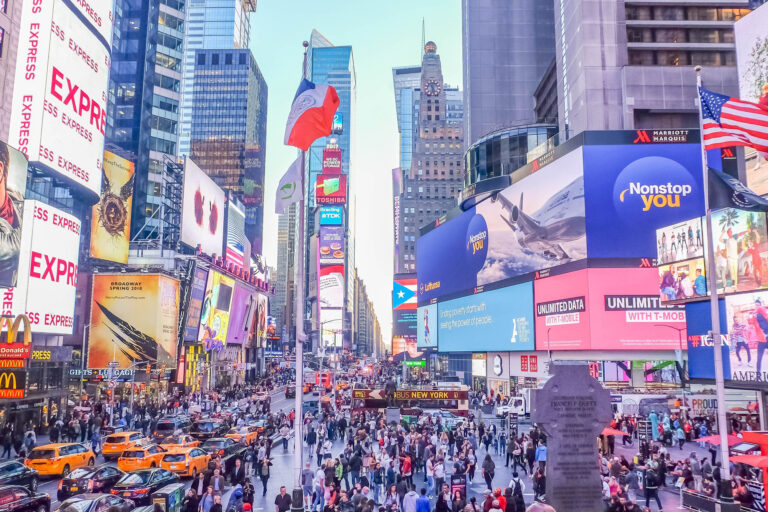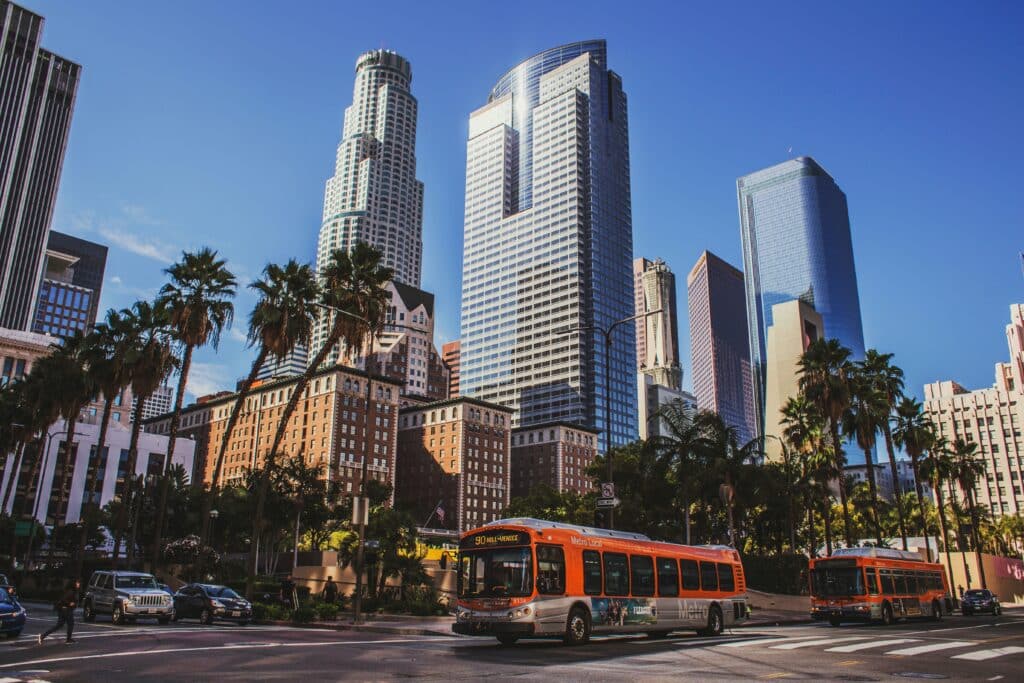Sanctuary cities: the very name feels mysterious. What are they? How many American sanctuary cities exist?
In this Remitly guide, we’ll give you answers to common questions about sanctuary cities in the U.S.—including myths vs. facts.
Sanctuary city basics
- Sanctuary cities: U.S. cities with policies limiting cooperation with federal immigration enforcement.
- Key protections: Reduced local law enforcement involvement in immigration matters.
- Non-interference: Sanctuary cities don’t prevent federal immigration authorities from enforcing immigration laws. They simply don’t actively assist in these efforts.
Dispelling myths about sanctuary cities: a quick guide
- Myth: Sanctuary cities harbor criminals.
- Fact: Sanctuary cities focus on building trust within communities, which can actually lead to better crime reporting and cooperation with local law enforcement.
- Myth: They defy federal law.
- Fact: Sanctuary cities operate within legal bounds, choosing not to use local resources for federal immigration enforcement, but they do not obstruct federal law enforcement actions.
- Myth: Increase in crime rates
- Fact: Studies show no significant correlation between sanctuary policies and increased crime rates. In fact, some studies suggest lower crime rates in these cities.
- Myth: Sanctuary cities provide legal immunity
- Fact: These cities do not offer legal protection from deportation. They limit cooperation with federal agencies but do not impede federal immigration law enforcement.
- Myth: They are funded by the federal government.
- Fact: Sanctuary cities primarily use local or state funding and are not specifically funded by the federal government for their sanctuary policies.
What is a sanctuary city?
The term “sanctuary city” often appears in the news, but most people don’t fully understand it. This term refers to a municipality that may limit its cooperation with the federal government’s efforts to enforce immigration law.
The sanctuary movement in the United States arose during the 1980s when the federal government turned away asylum seekers who were seeking protection and arriving from politically unstable countries in Central America that were engulfed in civil wars.
In 1982, several churches in the Southwestern U.S. publicly declared themselves sanctuaries for refugees. These houses of worship followed the tradition of churches that helped hide enslaved people in defiance of the Fugitive Slave Act enacted in the U.S. during the years leading up to the Civil War.
Inspired by the churches, local officials in San Francisco passed the symbolic “City of Refuge” resolution in 1985. It prohibited the use of city funds to assist federal immigration enforcement.
Since then, many other cities, counties, and states have passed ordinances to defend immigrants and refugees. Sanctuary jurisdictions protect immigrants from persecution and inform them about their rights. Some places refer to these laws as a welcoming city ordinance rather than a sanctuary policy.
In some cases, they may issue immigrants official documentation and identification to help them assimilate into society. Local authorities may also offer websites and apps for immigrants to assist them with finding healthcare services, school districts, and legal help.
As of December 2023, the Center for Immigration Studies had identified more than 170 sanctuary cities and counties in the U.S.
List of sanctuary cities
There are municipalities and counties across the continental U.S. with sanctuary policies. Sanctuary cities vary in size and have different policies. However, they all have one thing in common: a policy of welcoming immigrants.
Some places that have declared sanctuary city status or are in a county with a sanctuary policy include:
- Alexandria, VA
- Baltimore, MD
- Boston, MA
- Chicago, IL
- Columbus, OH
- Denver, CO
- Detroit, MI
- Hartford, CT
- Iowa City, IA
- Jackson, MS
- Los Angeles, CA
- Minneapolis, MN
- Montpelier, VT
- Newark, NJ
- New Orleans, LA
- New York City, NY
- Oklahoma City, OK
- Philadelphia, PA
- Pittsburgh, PA
- Portland, OR
- Providence, RI
- Raleigh, NC
- San Diego, CA
- San Francisco, CA
- Seattle, WA
- Washington, DC
How do sanctuary cities work?
State and local jurisdictions establish their own laws and regulations as a part of their sanctuary city policy. As a result, the specific details of how things work within each city vary.
One thing sanctuaries have in common is that they limit resources provided to federal immigration authorities attempting to apprehend undocumented immigrants. Let’s look at what happens when police departments encounter an undocumented person in a typical city versus one with a sanctuary policy.
Arrests of undocumented immigrants in non-sanctuary cities
In a non-sanctuary city, local law enforcement usually partners with federal agents. If the police arrest an undocumented person, local law enforcement officers will typically hold the person until U.S. Immigration and Customs Enforcement (ICE) can come to the jail and retrieve them.
To do this, local law enforcement notifies ICE that they have an undocumented suspect in custody and request a detainer. If the detainer request is approved, the person will stay in jail.
There are some limits to detainers. State or local laws may limit how long a person can be in custody. In this case, the police will hold the suspect for the maximum time, and if the federal authorities fail to arrive before it expires, the person will be released.
Arrests of undocumented immigrants in sanctuary cities
In sanctuary jurisdictions, undocumented immigrants are held as long as any other suspect. Local law enforcement won’t usually contact federal immigration authorities to tell them about an undocumented immigrant in custody.
Because federal immigration agents won’t be coming for them, the undocumented immigrant can leave detention if the charges are cleared or dropped. The person may also be released if they pay bail or complete a jail sentence.
How sanctuary city policies benefit law enforcement
During debates about sanctuary policy, the benefits of sanctuary status for law enforcement usually fall through the cracks. Although cities adopt sanctuary status to show they’re welcoming to immigrants, goodwill usually isn’t the primary reason for the move.
Law enforcement is most effective when the local community cooperates. Police can’t investigate crimes if witnesses don’t talk to them, and they can’t stop crimes in progress if no one reports them.
Unfortunately, undocumented immigrants and their relatives may be fearful of the police. They may hesitate to call emergency services or answer a police officer’s questions, even about unrelated matters.
Due to policies enacted by their local governments, sanctuary jurisdictions offer people peace of mind that interactions with the police won’t result in detention. Sanctuary policies build trust between immigrant communities and law enforcement agencies so officers can better serve their cities. As a result, it’s not uncommon for local law enforcement to support sanctuary policies.
What protections are afforded to people in sanctuary cities?
The specific protections afforded to people living in these types of cities in the U.S. vary. Each city has its own laws and regulations. Read on to explore some elements that state and local authorities might include in their sanctuary policies and how sanctuary jurisdictions differ from other places.
Protection from extended detention
In most areas, undocumented immigrants receive protection from prolonged detention. If arrested, law enforcement won’t hold them beyond the time it takes to clear the charges, post bail established by a judge, or serve a sentence.
Reduced local involvement with police raids
Some sanctuary city policies go further. Local law enforcement may refuse to assist with local ICE raids, or they may not offer requested support like additional staffing.
This fact doesn’t mean ICE raids don’t occur in these types of cities. It simply means the local police won’t assist federal agents with them.
Lack of immigration detention centers
Some sanctuary cities and counties prohibit ICE from establishing detention centers within their borders. When governments impose this rule, federal immigration enforcement officers may have to travel further to apprehend an undocumented immigrant.
Increased privacy
Some sanctuary cities protect people from questions about their immigration status or citizenship status when applying for services. Others limit gathering immigration data from people.
For example, people may not need to give their immigration status when registering their children for a public school in a sanctuary city. Or, the school district may only be allowed to ask if the child is a U.S. citizen. If the answer is no, the school official can’t ask for the specific immigration status or inquire whether the child has legal status.
Sanctuary city laws may also limit how much information government agencies share with federal officials. For example, they may not provide federal immigration enforcement with statistics regarding how many immigrants live in a particular neighborhood or attend a local school.
Protection from ICE officials while in jail
Some sanctuary cities and counties won’t allow ICE agents to enter a jail or prison without a warrant. In these areas, immigration officials must convince a judge to grant a search or arrest warrant before entering. If the judge issues the warrant, undocumented immigrants can be removed from jail or prison by ICE.
What sanctuary status doesn’t mean
Many people have the impression that a sanctuary city is a safe harbor for immigrants. However, the idea that someone living in a sanctuary city receives complete protection from federal immigration laws is false.
Undocumented immigrants living in these cities can still be detained by ICE and deported. Sanctuary policies simply mean that local police departments won’t help federal agencies enforce federal immigration law.
Understanding immigrant protections
Because laws governing these types of cities in the U.S. vary greatly, immigrants must become familiar with the protections in the places they live.
Refrain from assuming that you have a set of guaranteed protections if you live in a sanctuary city. Check the county or city website to learn more about your local laws.

What is the relationship between the federal government and sanctuary cities?
In sanctuary cities, the federal government still has jurisdiction over immigration issues, and federal law regarding immigration is still in effect.
Sanctuary laws don’t prevent ICE agents or other federal immigration officers from entering a city or apprehending undocumented immigrants. People living in these cities are still subject to the same federal immigration laws as individuals living in other places.
The difference between sanctuary cities and non-sanctuary cities is the level of cooperation. Law enforcement officers in a sanctuary city will either not partner with ICE or will only assist them a little. In non-sanctuary cities, law enforcement usually works with ICE.
What happens when there is a disagreement between a sanctuary city and the federal government?
Sanctuary cities aren’t illegal in the U.S. The federal government can’t stop cities and counties from establishing sanctuary policies.
However, the federal government’s executive branch has sought to punish or retaliate against these types of cities. In January 2017, President Donald Trump issued an executive order that blocked these types of cities from receiving federal funding like federal grants.
Ultimately, a judge blocked the executive order, ruling that it violated federal law. President Joe Biden rescinded the order in April 2021.
These historical events show how conflicts between sanctuary cities and the federal government are resolved. The U.S. court system is responsible for ruling on the legality of sanctuary city policies and the federal government’s attempts to restrict them.
Legal disputes between cities and the federal government are typically tried in federal district courts. If either party is dissatisfied with the lower court’s ruling, they may argue their case in federal appeals court. Should the appeals court not be able to settle the matter, the case may go all the way to the U.S. Supreme Court.
Immigrants who believe the federal government violated their rights as a resident of a sanctuary city can take advantage of legal resources to help them navigate the court system. Local affiliates of the American Civil Liberties Union (ACLU) and the Southern Poverty Law Center are good places to start.
Why are sanctuary cities in the news more often recently?
Sanctuary cities have been in the news more frequently over the last few years as politicians leverage immigration to draw support. In 2023, North Dakota passed a law banning sanctuary cities, even though there were no sanctuary policies in effect in the state then.
Acts of political theater are also drawing attention to these types of cities. In 2022, Governor Ron Desantis of Florida and Governor Greg Abbott of Texas began transporting immigrants to sanctuary cities like New York, Chicago, and Washington, D.C. Although the governors said they simply require sanctuary cities to assist with immigration, critics argue that these politicians wanted to stir up support for their reelection campaigns.
Unfortunately, discussions about sanctuary cities aren’t often factual. That’s why it’s essential to use trusted sources like government websites to obtain information about sanctuary city policies.
How might sanctuary cities change in 2024?
In 2024, these cities may face legislative challenges at the federal level. With the Republicans controlling the House of Representatives, there is an increased chance that bills restricting sanctuary cities may be put forth. However, any legislation would also need to be passed by the U.S. Senate, where they are unlikely to succeed.
The Biden administration has asked sanctuary cities to consider increasing cooperation between local and federal agencies. In February 2022, Homeland Security Secretary Alejandro Mayorkas told a group of mayors he hoped that localities that previously refused all assistance to ICE would reconsider. As of September 2023, no sanctuary cities have reconsidered.
Key takeaways for immigrants
Both immigrants living in sanctuary cities and those who advocate for them must stay informed about laws and regulations. Learn more about the sanctuary policies in your city or county to understand what protections are currently in place.
Stay up to date on the latest news about immigration laws and sanctuary policies. One easy way to do this is to set up alerts through a news app or site like Google News. You can enable notifications or subscribe to emails with the latest stories related to keywords like “sanctuary city” and “immigration in CITY NAME.”

